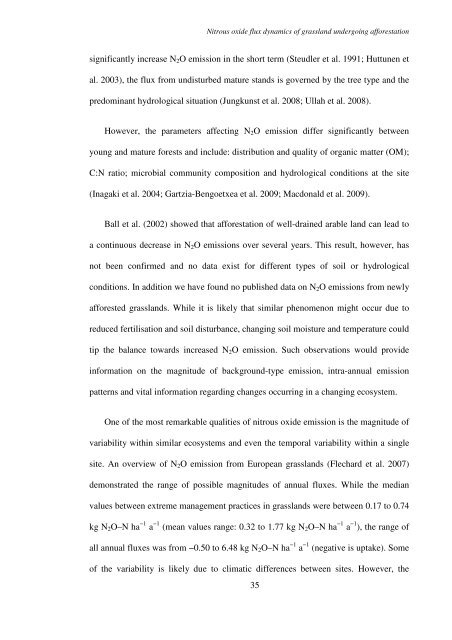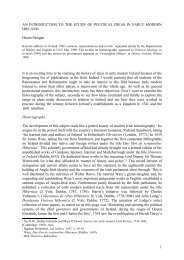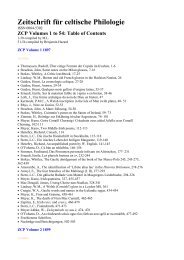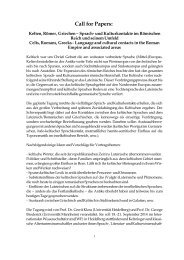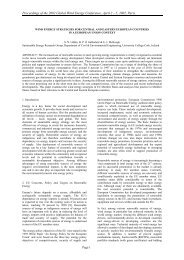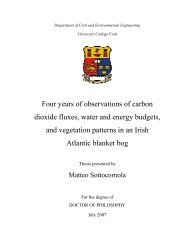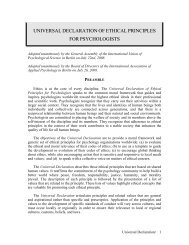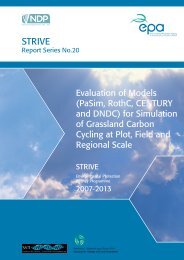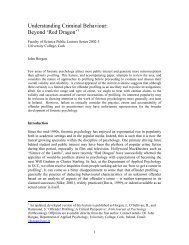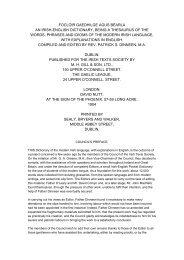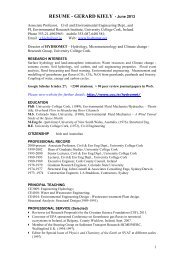PhD Thesis, 2010 - University College Cork
PhD Thesis, 2010 - University College Cork
PhD Thesis, 2010 - University College Cork
Create successful ePaper yourself
Turn your PDF publications into a flip-book with our unique Google optimized e-Paper software.
Nitrous oxide flux dynamics of grassland undergoing afforestation<br />
significantly increase N 2 O emission in the short term (Steudler et al. 1991; Huttunen et<br />
al. 2003), the flux from undisturbed mature stands is governed by the tree type and the<br />
predominant hydrological situation (Jungkunst et al. 2008; Ullah et al. 2008).<br />
However, the parameters affecting N 2 O emission differ significantly between<br />
young and mature forests and include: distribution and quality of organic matter (OM);<br />
C:N ratio; microbial community composition and hydrological conditions at the site<br />
(Inagaki et al. 2004; Gartzia-Bengoetxea et al. 2009; Macdonald et al. 2009).<br />
Ball et al. (2002) showed that afforestation of well-drained arable land can lead to<br />
a continuous decrease in N 2 O emissions over several years. This result, however, has<br />
not been confirmed and no data exist for different types of soil or hydrological<br />
conditions. In addition we have found no published data on N 2 O emissions from newly<br />
afforested grasslands. While it is likely that similar phenomenon might occur due to<br />
reduced fertilisation and soil disturbance, changing soil moisture and temperature could<br />
tip the balance towards increased N 2 O emission. Such observations would provide<br />
information on the magnitude of background-type emission, intra-annual emission<br />
patterns and vital information regarding changes occurring in a changing ecosystem.<br />
One of the most remarkable qualities of nitrous oxide emission is the magnitude of<br />
variability within similar ecosystems and even the temporal variability within a single<br />
site. An overview of N 2 O emission from European grasslands (Flechard et al. 2007)<br />
demonstrated the range of possible magnitudes of annual fluxes. While the median<br />
values between extreme management practices in grasslands were between 0.17 to 0.74<br />
kg N 2 O–N ha −1 a −1 (mean values range: 0.32 to 1.77 kg N 2 O–N ha −1 a −1 ), the range of<br />
all annual fluxes was from −0.50 to 6.48 kg N 2 O–N ha −1 a −1 (negative is uptake). Some<br />
of the variability is likely due to climatic differences between sites. However, the<br />
35


